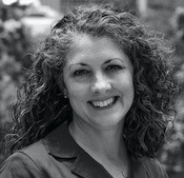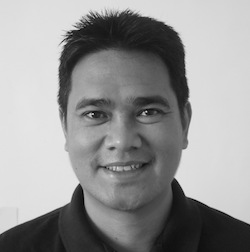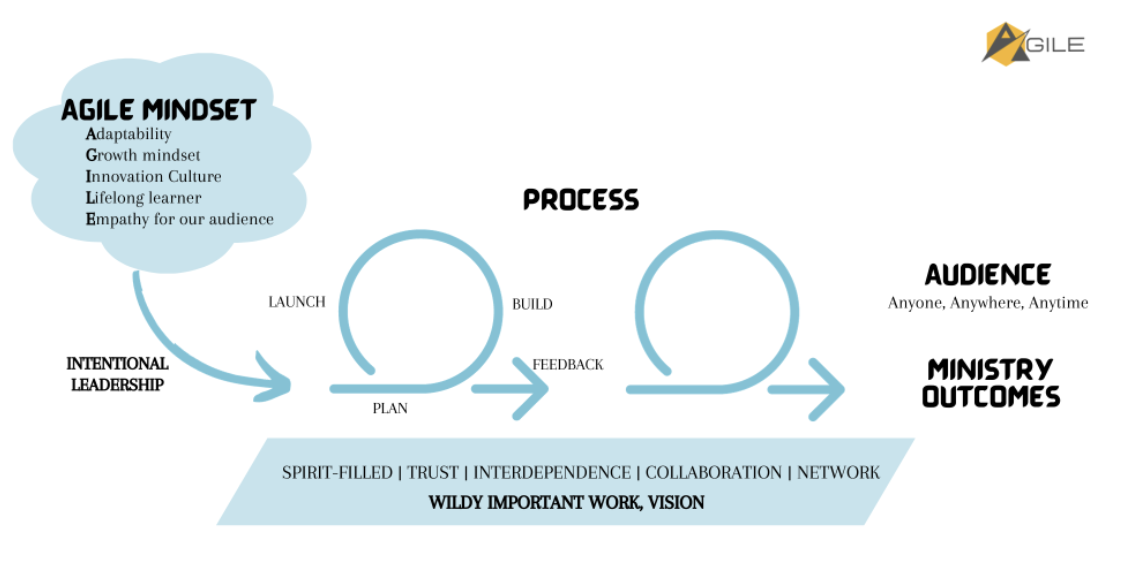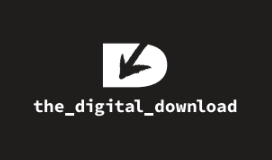
Cheryl Boyd
Global Vice President, Digital Strategies

Most days, I wake up with a clear sense of what needs to be done. I am energized as I assess where we are in the mission, what changes are coming, and what path we need to take to continue making progress in the Great Commission. My hope is high, and I am motivated. But some days, I feel overwhelmed. It feels like the ground is shifting too fast beneath my feet and I’m wearing high heels when I should have my hiking boots on.
Unwelcome shifts in our current realities can come from both expected and unexpected sources. Whether it is geopolitical unrest, natural disasters, illness, personnel changes, or a perspective shift, circumstantial tremors and quakes remind us of our need to practice the leadership skill of agility.
Some of us may be motivated by an environment where change is constant—it may even be what drew you to Digital Strategies in the first place. But for those who work in technology, these changes can be particularly challenging. We assume innovation and change will happen. We might even think we’ve mastered agility. But then, we start to see cracks in our thinking and hearts. New leaders bring new priorities. We pour our heart and soul into a tool that is “sunsetted” before we are ready to let go and follow a new path. Or, the worldly perspective creeps in—that technology will allow us to manage our problems, pains, and weaknesses. Technology is an empty, heartless idol that will not satisfy. Change can be so constant and come at such a pace that we grow weary in body, mind, and spirit.
Yesterday, I noticed I had been unconsciously carrying a lot of stress. There was a growing pit in my stomach, and I did not immediately know where it came from. I decided to stop and list all the significant changes in the world, the organization, and my family that were impacting me. The list grew, and so did my self-awareness. None of the things on the list were within my control to change, so I decided to respond by doing something that was within my control. I took a walk with the Lord. I have learned that stewing on problems that are not mine to solve is very unproductive. Instead, I do things that are mine to do:
Go to the Lord in prayer.
Drink water.
Move my body.
Eat healthy food.
Get good rest.
Connect with close, trusted friends.
The Lord met with me on my walk. The pit in my stomach seemed to get smaller with each step. Jesus lifted my head and my perspective. These circumstantial earthquakes are nothing new to Him. Compared to His purposes and plans, which are as enduring and unfailing as He is, my list was transformed from overwhelming to opportunity. The opportunity is to find refuge in the God of our salvation, to ask for wisdom from the One who gives generously every time we ask, and to cast that list and those problems on Him because He does care for me. They are His to solve. He is the Master I serve and the Shepherd who gives me rest.
Lord, my heart is not proud;
my eyes are not haughty.
I don’t concern myself with matters too great
or too awesome for me to grasp.
Instead, I have calmed and quieted myself,
like a weaned child who no longer cries for its mother’s milk.
Yes, like a weaned child is my soul within me.
O Israel, put your hope in the Lord—
now and always.
(Psalm 131)
An agile mindset is essential in our work but does not replace our dependence on the Lord. Take some time to stop and identify the changes impacting you today. Bring them to Jesus with the posture of Proverbs 3:5-6.
Trust in the Lord with all of your heart. Do not lean on your own understanding. Acknowledge Him in all of your digital strategies, and He will direct your path!
Together with you,
Cheryl

Jomer Gallana
Cru Philippines Digital Strategies Leader

I was struck by calm and agile sharks as I watched a National Geographic TV show recently. Sharks are among the most agile fish, with their torpedo-shaped bodies and well-developed muscles enabling quick bursts of speed and rapid changes in direction to catch prey or evade threats.
In November 2023, “Agile” was the theme of our DS conference in Southeast Asia. The conference's goal was to unleash and empower DS staff to fulfill the Great Commission in a rapidly changing environment. We covered the basics of Agile, digital maturity, design thinking, and fostering an innovation culture. The Audience Map was also introduced as a new tool for understanding and connecting with our audiences.
Teams from South-Southeast Asia (SESA), North America, and the Middle East (NAMESTAN) shared how they saw God work in digital spaces. One team highlighted their innovative approach of creating merchandise to bridge offline and online pathways. Notably, they used raincoats, which were practical in a country reliant on motorbikes, with QR codes directing individuals to online experiences exploring God and spirituality.
Our main takeaway is summarized in the diagram below. It is vital to have an AGILE mindset. AGILE, in this case, is an acronym that means:
As Digital Strategists, we start with our vision. This vision is fueled by our Spirit-filled life, trust, interdependence, and strong collaboration within the global network. Embracing an AGILE mindset is crucial as we plan, build, launch, gather feedback, and repeat this process to reach our audience effectively. This requires intentional leadership and a clear end in mind to help people take their next best step in following Jesus.
An AGILE mindset requires adaptability, a growth-oriented attitude, fostering a culture of innovation, being a lifelong learner, and continuously empathizing with our audience. By embracing this mindset with the guidance of the Holy Spirit, we are empowered to tackle the diverse challenges of today's world. I pray that we become calm and AGILE digital strategists capable of navigating the complexities of our digital age.


Simon Seow
Senior Digital Strategist, Global Digital Strategies

Few people know that Indigitous was birthed from a failed proposal—mine!
Indigitous is a global movement taking the gospel to new people, places, and spaces. In 2014, Russ Martin (also a co-founder) and I submitted rather different plans for Indigitous's first gathering. My proposal called for one global conference bringing together some of the best leaders, thinkers, and practitioners from around the world. It would be centrally planned and executed and could only accommodate a limited number of participants.
Russ’s plan was to have several smaller events in different parts of the world, co-led by local champions, gathering indigenous leaders from that region and opening possibilities for more participation. The team loved Russ' idea and asked me to run his proposal.
At that point, my approach seemed to make the most sense because of our limited resources, and it was something we were familiar with. However, I must confess that it felt like God was prompting us towards a “holy pivot,” an unexpected and unconventional move. Were we willing to join Him in a new adventure with an untested idea or approach? Our research showed us that many more people from various levels of the organization and ministry, especially practitioners, desired to connect with others and learn from them. A typical global conference usually draws the same high-level leaders who attend every time.
This awareness of the changing needs, coupled with God's guidance, assured us we needed to try something new.
Not Just a Good Idea, But a God Idea
The initial five Indigitous conferences we held in 2014-15 sparked more than 80 smaller Indigitous # events worldwide over the following few years. This completely blew our minds! These smaller local gatherings, initiated by passionate local champions, used the simple frameworks we offered (which we iterated and tweaked repeatedly). At each of these events, indigenous leaders from every sector—ministry, church, marketplace—rose up to explore, learn, and collaborate on ideas and initiatives on #digitalmissions to carry out God's mission in their own contexts. Witnessing this unexpected groundswell, we knew it was not just a good idea but a God idea.
This Indigitous experience, which continues to be an ongoing experiment, taught me this fundamental lesson: “Agility is responding to God’s leading, even when it seems disruptive or unexpected.”
Learning to be agile doesn't happen overnight; it's a life-long process. But as leaders and ministers of the gospel, our motivation to love our audiences and serve them well drives us towards agility. Let's keep growing in our posture of agility for the sake of the call!
Tips to Develop the Right Posture for Agility:
A: Cultivate adaptability: It's a key characteristic of agility.
G: Remind yourself that God is in control
I: Consider this an invitation to innovate: How might I approach this differently?
L: Learning and growth are always part of agility
E: Expect to be encouraged: Trust that God will show up and build the house (Ps 127:1).
Questions to Ponder:


©1994-2022 Cru. All Rights Reserved.